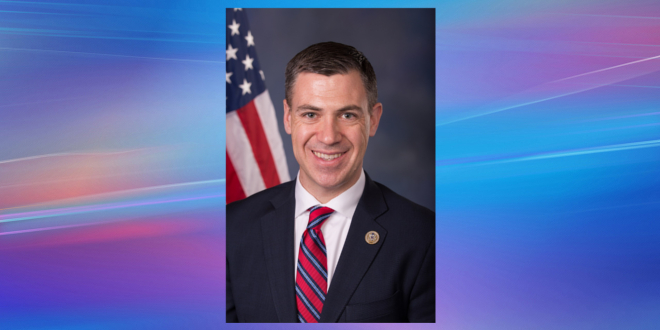Washington, D.C. – Congressman Jim Banks (IN-03), a member of the House Armed Services Committee and a core member of the Fiscal Year 2019 National Defense Authorization Act (NDAA) conference committee, today praised the bill’s passage by the House of Representatives.
“Today, with strong bipartisan support, Congress continued to make tremendous progress to provide the resources and authorities necessary to rebuild our military,” said Banks. “In order to address today’s challenges and tomorrow’s uncertainties, we must have the most lethal joint force with cutting-edge capabilities so that no potential adversary would even consider challenging us. This bill is a major step in the right direction, and I am proud to have served as conferee this year.”
The FY19 NDAA passed the House by a vote of 359 to 54. The legislation includes many initiatives championed by Congressman Banks that are important to Indiana, including:
- Ultra Electronics USSI: The NDAA includes increased funding for sonobuoy procurement, a critical acoustic sensor used to locate, track and obtain undersea threat criteria. USSI in Columbia City is a leader in sonobuoy production and provides 425 jobs in Indiana’s Third District.
- Harris Corp: The bill contains language that requires the Air Force to develop a plan to provide persistent weather imagery for U.S. Central Command after 2025. The plan is required by March 1, 2019. Harris, a manufacturer of components used in military weather satellites, employs 551 employees across Indiana and 530 employees in the Third District.
- Indiana National Guard: The bill includes language that requires the Army to do an annual report on equipment modernization and fielding parity between the active component and the reserve component. Indiana has the fourth largest Army National Guard in the nation.
- Naval Surface Warfare Center – Crane Division: The bill includes additional funding for investments in Model Based Systems Engineering in order to develop shore testing capabilities for future hypersonics weapons as quickly as possible. Crane in southwest Indiana is integrally involved in the research and development of these high-speed weapons.
- Rolls-Royce: The bill increases funding for the Air Force C-130 engine enhancement program, which increases the life cycle and fuel economy of the engine and improves the operational performance of the aircraft. This will save the Air Force nearly $2 billion over the platform’s life cycle. This was designated as one of the Air National Guard’s critical capabilities. Rolls-Royce employs over 4,000 Hoosiers across Indiana.
- Raytheon: The NDAA includes increased funding for upgraded F-15C fighter jet electronic warfare equipment, essential in its air superiority role. Raytheon, a manufacturer of electromagnetic systems used in military hardware, employs 1,433 employees across Indiana and 511 employees in the Third District.
The legislation also provides funding for several programs and initiatives that are critical to Indiana’s defense industry, including Hoosier employers like BAE Systems, AM General, Cummins, and Allison Transmission.
Other Highlights
- Afghanistan Accountability: The bill includes language authored by Rep. Banks that requires the Secretaries of Defense and State to provide Congress with an assessment on the efforts of the Afghanistan government to manage, employ and sustain the equipment and inventory provided through U.S. government taxpayer funds. This initiative will make certain proper assessments are being made in Afghanistan to ensure U.S. taxpayer dollars are being spent efficiently and effectively while defeating the Taliban and other terrorist organizations.
- Career Intermission Program: The bill contains legislation authored by Rep. Banks that would make permanent a pilot program that currently allows service members to take a short “sabbatical” to meet personal or professional needs. The current pilot program for career intermission allows service members to temporarily transfer into the Individual Ready Reserve for up to three years while retaining full health care coverage and base privileges, as well as part of their salary. This transfer extends their active duty service requirement by twice their time of leave. The highly successful pilot program was set to expire in 2019.






